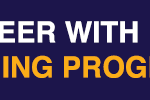Artificial intelligence isn’t coming for jobs—it’s already here and working faster than most people realize. MIT research shows that AI will replace 2 million manufacturing workers by 2025, but the impact extends beyond factory floors. The transformation is from customer service chatbots handling millions of interactions to AI systems writing code at major tech companies.
Goldman Sachs predicts that AI could replace 300 million full-time jobs worldwide. That sounds scary, but here’s the thing: the World Economic Forum also projects that while 92 million jobs will disappear by 2030, 170 million new ones will emerge. The real question isn’t whether AI will change work – it’s which jobs will go first and how quickly workers can adapt.
The Numbers Don’t Lie: AI’s Massive Impact
According to research from major institutions, the scale of AI job displacement is staggering. Goldman Sachs’ analysis shows that two-thirds of jobs in the United States and Europe face some degree of AI automation. Meanwhile, McKinsey Global Institute reports that by 2030, at least 14% of employees will need to change their careers entirely. These aren’t distant projections—they’re based on today’s AI capabilities.
The timeline is moving faster than expected. The World Economic Forum’s 2025 Future of Jobs Report found that 41% of employers worldwide plan to reduce their workforce in the next five years because of AI automation. Due to technological advances and cost pressures, 65% of retail jobs could become automated by 2025. Countries like Hong Kong, Israel, Japan, Sweden, and the United States will see the most significant impact, while workers in China, Nigeria, Vietnam, Kenya, and India face less immediate risk.
1. Administrative and Data-Heavy Jobs
You’re in danger if your job involves data entry, filing, or basic number crunching. AI systems excel at repetitive, rule-based tasks that follow predictable patterns. These jobs are getting automated because machines can do them faster, more accurately, and without taking breaks or sick days. Data entry clerks are particularly vulnerable – McKinsey studies show that up to 38% of data entry tasks could be automated by 2030.
Bookkeeping and fundamental accounting roles are also disappearing quickly. AI-powered accounting software can manage financial transactions, balance books, and even prepare tax returns without human help. Administrative assistants face challenges similar to AI’s in scheduling, email management, and basic research tasks. The common thread? These jobs involve processing information in predictable ways, precisely what AI does best.
2. Customer Service Representatives
Customer service is experiencing a major shake-up as AI chatbots become more sophisticated. IBM’s AI system handles over 11 million customer interactions yearly with barely human oversight. These AI assistants can answer questions, solve problems, and even handle complaints 24/7 without getting tired or frustrated. It’s a no-brainer for companies – AI customer service costs up to 80% less than human representatives.
The shift is happening fast across industries. Gartner predicts that by 2027, 25% of all customer service operations will rely on AI chatbots as their primary tool. Telemarketing jobs are disappearing even quicker because AI can automatically make calls, pitch products, and follow up with potential customers. While complex customer issues still need a human touch, the simple, routine interactions that make up most customer service work are moving to machines.
3. Manufacturing and Transportation Workers +
Manufacturing has always been a target for automation, but AI is accelerating the process dramatically. MIT and Boston University research shows that AI will replace as many as 2 million manufacturing workers by 2025. Modern AI systems can control machinery, monitor quality, and predict when equipment needs maintenance. Unlike older automation that could only handle simple, repetitive tasks, today’s AI can adapt to changes and make decisions in real-time.
Transportation jobs face a similar future as autonomous vehicles become more reliable. Truck drivers, delivery workers, and even taxi drivers are seeing their roles threatened by self-driving technology. The change won’t happen overnight, but major shipping companies are already testing AI-controlled vehicles for long-distance routes. Retail cashiers are also being replaced by automated checkout systems, like those in Amazon’s cashier-less stores, which track purchases and handle payments without human help.
4. Entry-Level White-Collar Positions
You might think that office jobs requiring education would be safer, but entry-level white-collar positions are at high risk. Anthropic’s CEO predicts AI could eliminate half of all entry-level white-collar jobs within five years. Technology companies are leading this trend – 92% of IT jobs will be transformed by AI, with entry-level and mid-level positions hit the hardest. Even programming jobs aren’t safe, as Microsoft reports that AI now writes 30% of their code.
The reason is simple: entry-level jobs often involve learning routine tasks and following established procedures. AI can quickly learn and execute these patterns without the usual training period that new human employees need. Junior analysts, research assistants, and entry-level marketers find that AI can do much of their work faster and more consistently. While senior roles that require complex decision-making remain safer, the traditional career ladder is getting its bottom rungs knocked out.
Industries Leading the AI Revolution
Financial services are moving fastest because money and data go hand in hand. AI systems can analyze market trends, process transactions, and make investment decisions faster than human analysts. Banks use AI to detect fraud, approve loans, and provide customer service. The legal industry is also changing rapidly as AI tools can scan thousands of legal documents, find relevant cases, and draft basic contracts in minutes instead of hours.
Healthcare administration is another area seeing significant changes, though patient-facing roles remain mostly safe. AI can now transcribe doctor-patient conversations, schedule appointments, handle billing, and even help with diagnosis by analyzing medical images. Technology companies are naturally at the forefront, with major firms like Goldman Sachs hiring AI-powered software engineers who can code as well as humans but work around the clock without salaries or benefits.
The Good News: Many Jobs Remain Human-Only
Not every job is doomed to automation. Healthcare workers who directly care for patients are among the safest from AI replacement. Nurse practitioners top the list of secure employment and are projected to grow by 45.7% by 2032. The reason is simple: patients need human empathy, emotional support, and the kind of flexible thinking that comes naturally to people but remains nearly impossible for machines.
Education is another safe harbor. Teachers, instructors, and school administrators deal with complex human interactions that AI can’t handle. Creative professionals like musicians, artists, writers, and personal service providers such as hairdressers, trainers, and counselors remain secure. These jobs require social skills, emotional intelligence, and the ability to adapt to individual human needs – qualities that make them AI-proof for the foreseeable future.
New Opportunities Are Emerging
While AI eliminates some jobs, it’s also creating new ones. The World Economic Forum estimates that 170 million new roles will emerge by 2030, though many require advanced education – 77% need master’s degrees and 18% require doctoral degrees. Machine learning engineers, AI prompt engineers, and human-AI collaboration specialists are just a few examples of careers that didn’t exist a decade ago.
The key is that these new jobs focus on working with AI rather than competing against it. A customer service agent might become a chatbot training specialist, teaching AI systems to handle complex customer situations. The most successful workers will be those who learn to use AI as a powerful tool to enhance their capabilities rather than seeing it as a threat to avoid.
Case Study: Greg’s AI Transformation
Greg worked as a data entry specialist at a mid-sized insurance company for eight years. His daily routine involved processing customer applications, updating policy information, and generating basic reports. He was good at his job, rarely made mistakes, and had built solid relationships with his coworkers. When his company announced they were implementing a new AI system to “enhance productivity,” Greg didn’t think much about it at first.
Within six months, the AI system was handling 70% of the data entry tasks that Greg’s team used to do manually. The company offered training programs to help employees transition to new roles, but Greg initially resisted. He worried about learning new skills and wasn’t sure if he could adapt to working alongside AI systems. Several of his colleagues took early retirement or found jobs at other companies, but Greg decided to embrace the change.
Greg enrolled in his company’s retraining program and learned to work as an AI quality specialist, reviewing the system’s work and handling complex cases that required human judgment. He discovered that his years of experience made him valuable in spotting patterns and errors that the AI missed. His new role paid better than his old one, and he found the work more engaging because he was solving problems rather than just entering data. Greg’s story shows that while AI can displace jobs, workers who adapt and retrain can often find better opportunities in the new landscape.
Key Takeaways
- AI job displacement is happening now, not in some distant future, with 300 million jobs potentially affected globally.
- Data entry, customer service, manufacturing, and entry-level white-collar jobs face the highest risk of automation.
- Jobs requiring human empathy, creativity, and complex problem-solving remain largely safe from AI replacement.
- Healthcare, education, and skilled trades offer the most job security in an AI-driven economy.
- New job categories are emerging, but many require advanced education and technical skills.
- Companies often mask AI-related layoffs under terms like “restructuring” or “optimization” to avoid backlash.
- Two-thirds of jobs in developed countries will experience some degree of AI automation by 2030.
- Workers who learn to collaborate with AI rather than compete against it have the best career prospects.
- Continuous learning and skill development are essential for staying relevant in the changing job market.
- The transition will create challenges and opportunities, with 170 million new jobs expected by 2030.
Conclusion
The AI revolution in the workplace isn’t a future possibility – it’s today’s reality. While the statistics about job displacement can seem overwhelming, history shows us that technological advances typically create more opportunities than they destroy, even if the transition period brings uncertainty and challenges. The workers who will thrive recognize that AI is a tool to enhance human capabilities rather than a threat to eliminate them.
The key to successfully navigating this transformation lies in focusing on uniquely human skills complementing AI’s strengths. By developing emotional intelligence, creative thinking, and complex problem-solving abilities, workers can position themselves for roles that AI cannot fill. Whether through formal retraining programs, online courses, or simply learning to work alongside AI tools in current positions, the opportunity exists for those willing to adapt. The future belongs not to humans versus machines, but to humans working with machines to solve problems and create value in ways neither could achieve alone.





